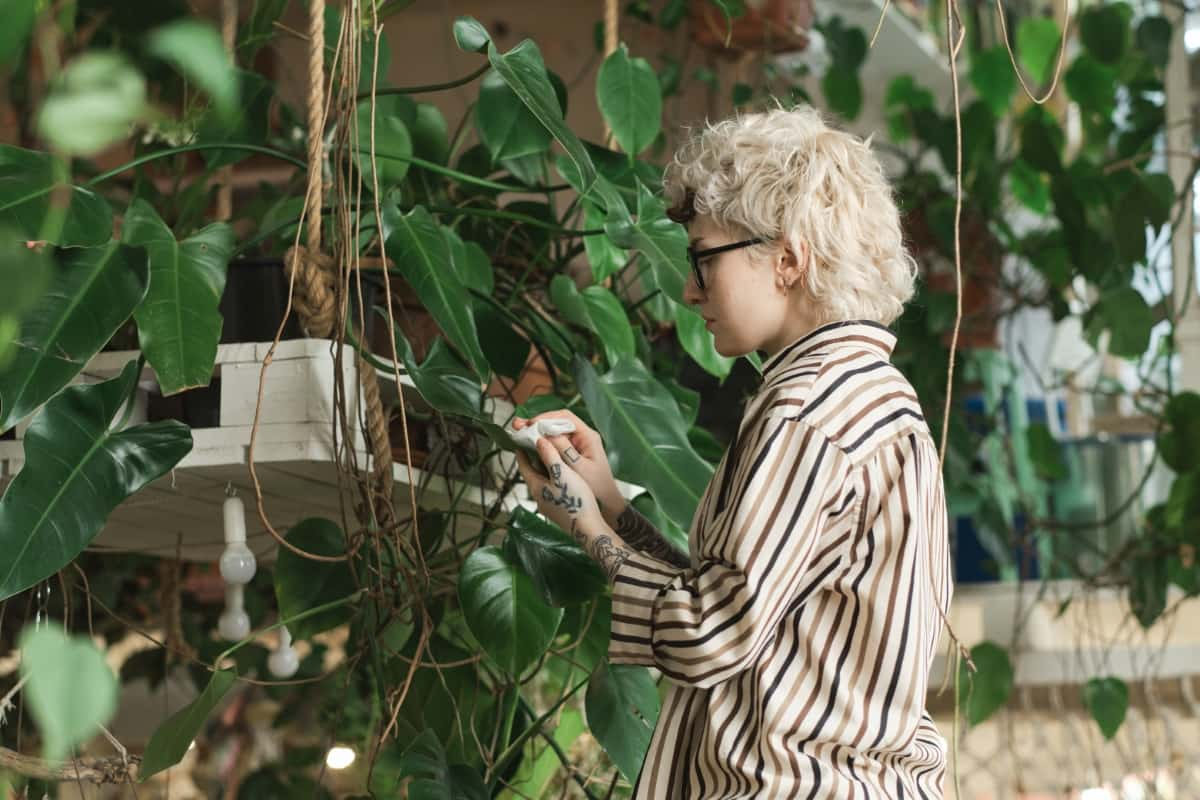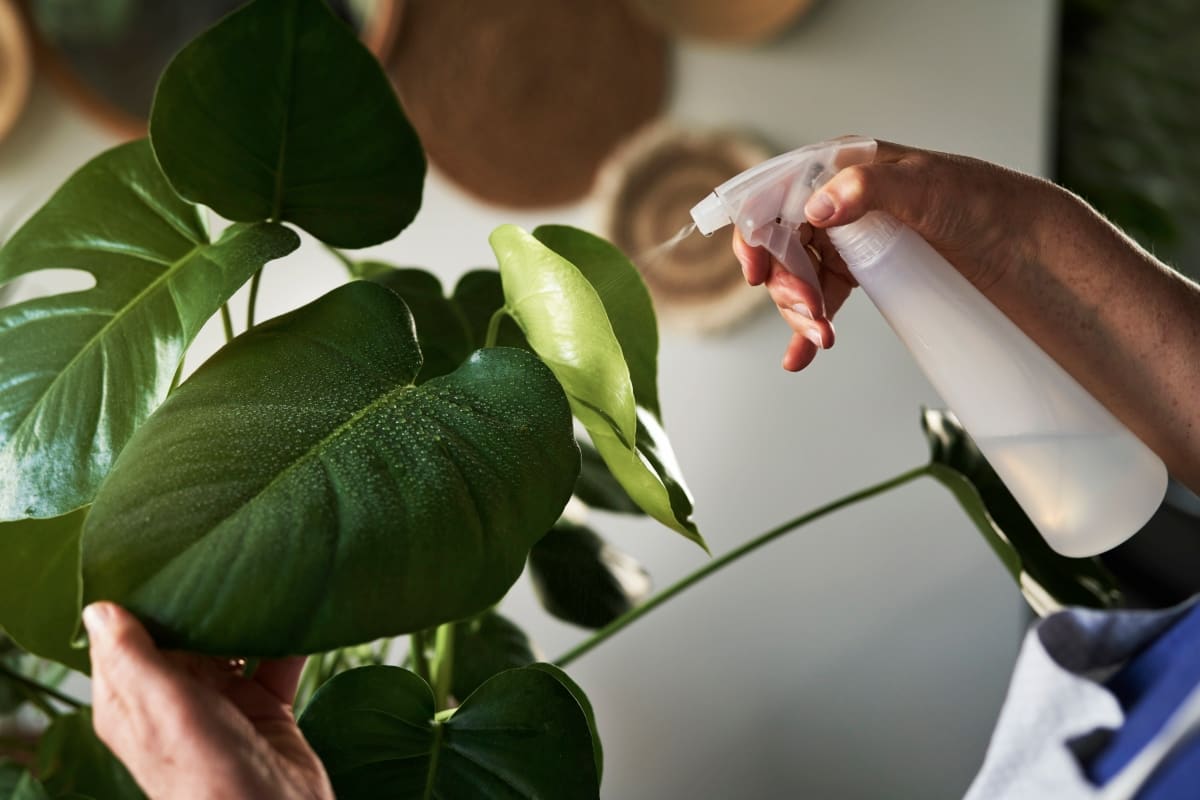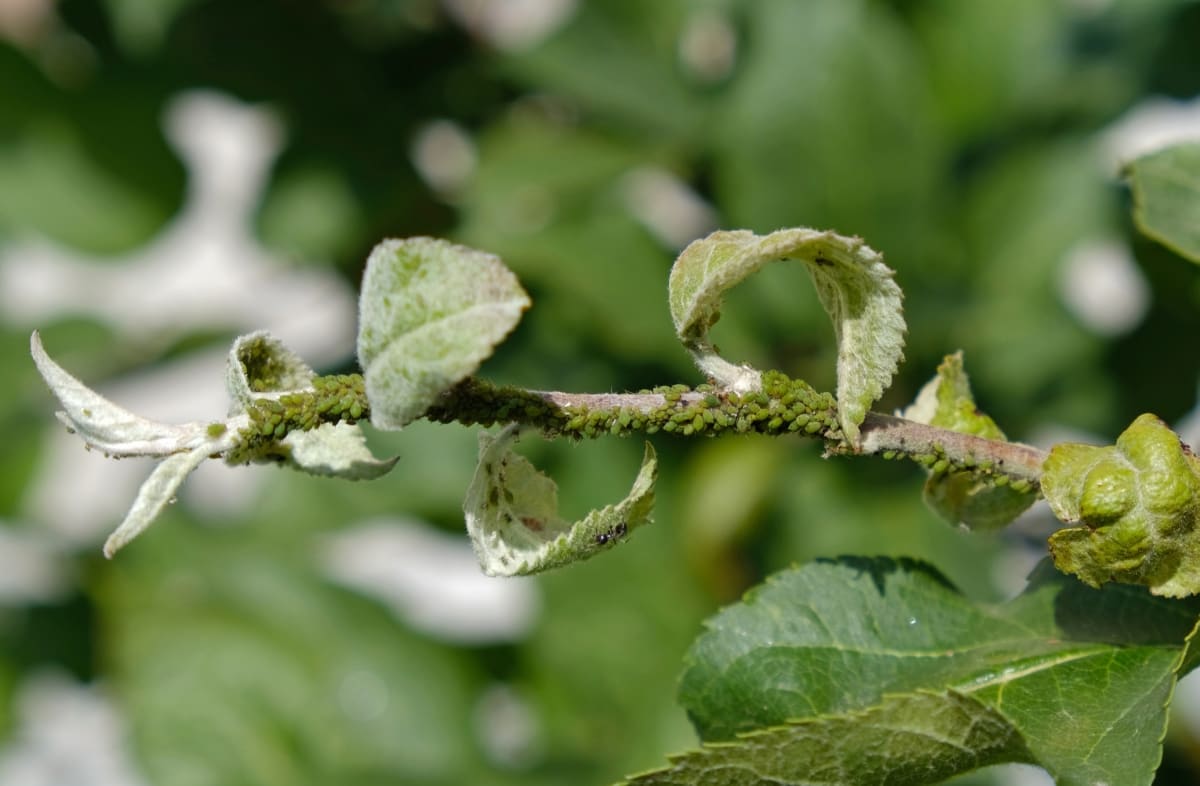Leaf curling in plants can affect their overall health and growth. One of the most notable effects is a reduction in photosynthesis. When leaves curl inward or upward, it limits the surface area exposed to sunlight, decreasing the plant’s ability to produce energy through photosynthesis. Before implementing any treatment methods, identifying the reason behind your plant’s leaf curling is crucial.

Inward and Upward Plant Leaf Curling
Causes of Inward and Upward Plant Leaf Curling
| Upward Curls | Caused by pests, deficiency or excess of water, or light conditions |
| Inwards | Caused due to either the new production of leaves or drought conditions |
Various factors, including a deficiency or excess of water, pests, or light conditions, can cause upward curls in plant leaves. When plants receive too much or too little water, their leaves may start to curl upwards as a response to the stress. Similarly, if a plant is infested with pests such as aphids or mites, it may lead to leaf curling.
On the other hand, inward leaf curling can occur due to new production of leaves or drought conditions. When plants actively produce new leaves, they may experience some curling as the young leaves develop and unfurl. Additionally, during periods of drought when there is limited water available for the plant’s growth and development, leaf curling inwards can help reduce moisture loss through evaporation.
As leaves become curled, they may not receive adequate water and nutrients from the roots due to restricted vascular systems. This deficiency can result in stunted growth and poor overall plant development. Understanding these causes is essential for effectively addressing plants’ inward and upward leaf curling.
Home Remedies for Inward and Upward Leaf Curling
- One effective remedy is using a mixture of water and neem oil. Neem oil has antifungal properties that can combat any fungal infections causing the leaf curling. Dilute the neem oil in water based on the instructions on the bottle, then spray it onto the affected leaves.
- Another option is creating a homemade foliar spray using ingredients like Garlic or Onion juice mixed with water. Both garlic and onion have natural insect-repellent properties that can deter pests responsible for leaf curling.
- Additionally, applying compost tea directly to the soil around your plants can provide them with essential nutrients they may be lacking, which could contribute to their leaf curling.
In case you missed it: Natural and Organic Ways to Treat Pumpkin Leaf Curl: Fix With Effective Home Remedies

Natural and Organic Treatments for Plant Leaf Curling
Neem oil – This organic remedy repels pests, causing leaf curling. Dilute neem oil in water and spray it on the affected leaves. Neem oil has insecticidal properties that help control pests without harming beneficial insects.
Homemade insecticidal soap – Mix liquid dish soap with water and spray it on the affected leaves. The soapy solution will suffocate any pests on the leaves, helping alleviate leaf curling.
Garlic spray – Garlic contains sulfur compounds that deter insects and boost plant immunity. To make your garlic spray, crush several cloves of garlic and steep them in water overnight. Strain the liquid into a bottle and apply it to the affected leaves.
Compost tea – It is another popular organic remedy for leaf curling. This nutrient-rich mixture helps improve soil fertility and promotes strong root development, which can reduce leaf curling symptoms. Apply compost tea around the base of your plants or use it as a foliar spray.
In addition to these specific remedies, maintaining proper plant care practices such as regular watering, adequate sunlight exposure, and appropriate fertilization can go a long way in naturally preventing inward and upward leaf curling issues.
Preventing Inward and Upward Leaf Curling in Plants
- It’s crucial to identify any deficiencies or excesses that may be causing leaf curling. Conduct regular soil tests to determine if your plant requires additional nutrients or if there is an imbalance in pH levels. Adjust fertilization accordingly to provide optimal conditions for growth.
- Proper watering techniques are also essential in preventing leaf curling. Overwatering can lead to root rot and subsequent leaf curling, while underwatering can cause drought stress.
- Another important aspect is providing appropriate lighting conditions for your plants. Position your plants where they receive the right amount of sunlight, or invest in artificial lighting solutions.
- In addition, regularly inspect your plants for pests and diseases that could contribute to leaf curling. Implement natural pest control methods such as introducing beneficial insects or using organic sprays when necessary. Remove dead leaves promptly and practice proper hygiene when handling tools or moving between garden areas.
In case you missed it: Natural and Organic Ways to Treat Squash Leaf Curl: Fix With Effective Home Remedies

Identifying the Reasons Behind Plant Leaf Curling
- One common reason for upward leaf curls is water-related issues. Plants may exhibit this curling type when they receive too much or too little water. Overwatering can lead to root rot and nutrient deficiency, while underwatering can result in dehydration and stress.
- Pest infestation is another culprit behind leaf curling. Insects such as aphids, mites, and thrips feed on plants’ sap, causing damage and distortion to leaves. This feeding activity disrupts the plant’s normal growth patterns, resulting in curled leaves.
- Light conditions also play a significant role in leaf curling. Insufficient light exposure can cause plants to stretch towards available light sources, leading to upward curls. On the other hand, excessive sunlight can scorch leaves and trigger defensive responses like rolling up or wilting.
How to Stop Inward and Upward Leaf Curling in Plants?
It’s important to identify the root cause of the leaf curling. Try implementing natural remedies to stop inward and upward leaf curling for your plants. For example, pruning damaged leaves or branches can help improve airflow and prevent further curling. Additionally, adding organic fertilizers to provide essential nutrients will promote healthy growth. Another effective method is using organic solutions such as neem oil spray to control pests without harming your plants or environment.
These natural treatments can work wonders in stopping leaf curling by tackling the underlying issues head-on. Preventing future inward and upward leaf curling occurrences requires proper plant care and maintenance. Regular watering schedules tailored to their specific needs will ensure they receive adequate moisture without being overwhelmed. Moreover, paying attention to lighting conditions is crucial – providing sufficient sunlight or adjusting artificial lighting accordingly can significantly prevent leaf curling.
In case you missed it: Natural and Organic Ways to Treat Guava Tree Leaf Curl: Fix with Effective Home Remedies

Managing Plant Leaf Curling with Organic Methods
One important step in managing leaf curling is identifying the root cause. It could be a deficiency or excess of water, pests, light conditions, or even new leaf production. Once you understand what’s causing the issue, you can take targeted steps to address it using organic methods.
For example, if your plants are experiencing upward leaf curls due to overwatering or poor drainage, adjusting your watering schedule and improving soil drainage can make a big difference. Implementing natural pest control measures such as companion planting or introducing beneficial insects can also help combat pest-related leaf curling. Organic fertilizers rich in essential nutrients like nitrogen, phosphorus, and potassium can nourish your plants and prevent nutrient deficiencies that may lead to leaf curling.
Additionally, providing adequate sunlight while protecting delicate leaves from excessive heat or cold temperatures is crucial for maintaining healthy foliage. Remember that managing plant leaf curling requires patience and consistent care. Organic methods may take slightly longer than synthetic alternatives but ultimately promote long-term plant health without harmful side effects.
Conclusion
Leaf curling can also indicate stress or damage caused by pests or diseases. Furthermore, leaf curling can hinder nutrient uptake by affecting root function. It is important to closely monitor leaf curling as it can signify underlying issues with plant health and indicate necessary actions for remediation. Understanding the effects of leaf curling allows gardeners and enthusiasts to address problems promptly and facilitate optimal plant growth.
- Ultimate Guide to Ossabaw Island Hog: Breeding, Raising, Diet, and Care
- Ultimate Guide to Juliana Pig: Raising Facts, Size, Diet, Care, and Lifespan
- Raising Lleyn Sheep: Disadvantages, Price, Uses, Characteristics, and Care
- Ultimate Guide to Meishan Pig: Breed Facts, Breeding, Raising, and Care
- Ultimate Guide to Teacup Pigs: Raising, Diet, Lifespan, Cost, and Care
- Guide to Raising Poll Dorset Sheep: Facts, Profile, Characteristics, Uses, and Care
- Ultimate Guide to Bighorn Sheep: Characteristics, Diet, Lifespan, Breeding, and Lifecycle
- Ultimate Guide to Raising Katahdin Sheep: Farming Facts, Breed Profile, Uses, and Care
- Ultimate Guide to Raising Oreo Cows: Belted Galloways Farming Facts, Profile, Uses, and Care